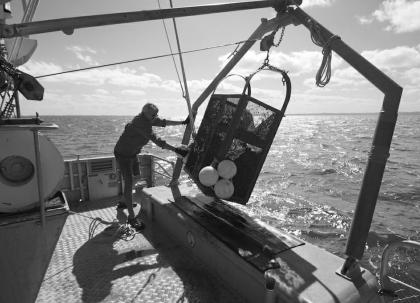4: In the Coral Sea
Half of our trip to date has been spent searching for bivalves on mud flats at low tide. The other half has been spent collecting bivalves in deep water in Moreton Bay, as well as offshore of these islands in the Coral Sea. For this, we chartered the "Tom Marshall," a research vessel from the Australian Department of Fisheries, and now use various dredges on the sand and mud bottoms to find our animals. Although some of the samples come aboard nice and clean, others fill the dredge with mud that we must first dig out shovelful by shovelful, then sieve by hand using a saltwater hose, and, finally, search for small bivalves.
Offshore dredging is exciting and offers a surprise each time the dredge surfaces, but it involves long hours of hard work before we can take the catch ashore. Working entire days at the sorting table, recording data, and labeling the catch is already exhausting. But doing this in rolling seas with crashing waves adds a challenge!
Still, after four days of offshore operations, our team is pleased with the results—we have almost all of the species that were on our target list, and we've found a few surprises that we have added to the list to study. Our containers are filling with specimens to be shipped to the Field Museum. As with our earlier shallow-water work, the surrounding wildlife is spectacular. Whales are surfacing around the vessel and the scuba team is encountering manta rays and sharks below.
More to come soon,
Rüdiger


